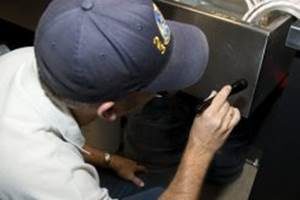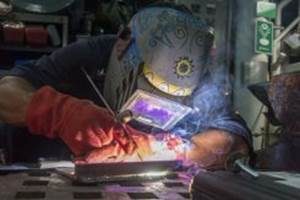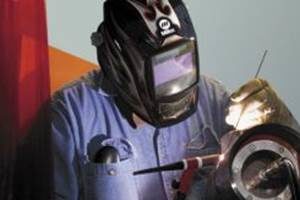Welding Quality Control
 Quality Control (QC) is the process of confirming that the product meets the specifications. In welding, QA/QC plays a vital role in ensuring sound and reliable welds are produced and in minimizing rework.
Quality Control (QC) is the process of confirming that the product meets the specifications. In welding, QA/QC plays a vital role in ensuring sound and reliable welds are produced and in minimizing rework.
Quality Assurance
Quality Assurance (QA) is a set of defined processes for systematic monitoring and evaluation to assure product quality.
Quality Control
Quality Control (QC) is the process of confirming that the product meets the specifications. It includes the checking and testing of manufacturing procedures as well as the final products. The results from these tests are compared with a set of defined acceptance criteria. By carrying out QC testing during manufacturing, defects can be identified in a timely manner, allowing for the product flaw to be rectified and if required, adjustments to be made in the manufacturing process to prevent further defective output.
In welding, QA/QC plays a vital role in ensuring sound and reliable welds are produced and in minimizing rework.
What can happen if QA & QC Procedures are Not Followed?
 Not carrying out adequate QA/QC during the fabrication can result in welds of varying quality. When weld defects surface, rectification will be required and may delay the delivery of the product to the customer. This may also result in a loss of reputation for the fabricator. If the contractual agreement with the customer mandates compliance to standards and the applicable QA/QC requirements were not followed, it can lead to contractual issues and legal penalties. This scenario is more likely if there are quality issues identified after completion of fabrication leading to delays and even worse, failure of the product during use.
Not carrying out adequate QA/QC during the fabrication can result in welds of varying quality. When weld defects surface, rectification will be required and may delay the delivery of the product to the customer. This may also result in a loss of reputation for the fabricator. If the contractual agreement with the customer mandates compliance to standards and the applicable QA/QC requirements were not followed, it can lead to contractual issues and legal penalties. This scenario is more likely if there are quality issues identified after completion of fabrication leading to delays and even worse, failure of the product during use.
Qualification of WPS and Welders
 Following the compilation of the WPS, the WPS itself and the welder need to be qualified.
Following the compilation of the WPS, the WPS itself and the welder need to be qualified.
Welder Qualification
Welder Qualification needs to be performed to confirm the welder’s ability to deposit sound weld metal for a specific type of weld, material and weld position.
WPS Qualification
WPS qualification serves the purpose of determining whether the welds are capable of providing the required characteristics for its application.
The extent of testing required to qualify the WPS will depend on whether pre-qualified weld preparations and consumables are used. In some instances (e.g. where standard pre-qualified welds are used), minimal or no testing may be required. Where WPS qualification is required, weld test pieces (also called weld coupons) are fabricated according to the WPS and the compliance standard. Non Destructive Testing (NDT) and Destructive Testing (DT) is then carried out on the test pieces to check for weld defects and the properties of the joint. A Procedure Qualification Record (PQR) or Welding Procedure Qualification Record (WPQR) is used to document the weld qualification.
The Welder Qualification needs to be performed to confirm the welder’s ability to deposit sound weld metal for a specific type of weld, material and weld position. The Welder Qualification is valid for a range of materials, thicknesses, positions and types of welds, depending on the qualification standard. It is documented on the Welder Qualification Test Certificate and Welder Performance Qualification.
Inspection and Test Procedure (ITP), check and test sheets – These documents are created based on the WPS and design documentation. They are completed as the QC checks/tests are carried out for recording purposes.
QC Prior to Welding
 QC prior to actual welding typically includes the following:
QC prior to actual welding typically includes the following:
- Confirmation of materialto ensure chemical composition and mechanical properties are compliant with the design specification – generally done through the sighting of material certificates. In certain circumstances, some testing may also be required e.g. on thick plates UT to rule out laminar tearing during/after welding.
- Joint preparationto ensure the preparation is compliant with the design specification and/or specified welding standard. This includes dimensional and cleanliness checks.
- Joint fitmentchecks – root opening, tacking and backing material (etc.) are according to the WPS and the compliance standards.
- WelderQualification – check that the welder is qualified to carry out the weld.
QC During Welding
- Check preheat and interpass temperaturesare within limits specified in the WPS
- Confirm filler materialis as specified in the WPS
- Other checks: cleaning between passes, weld run appearance, back gouging where specified
- Confirm that the WPS is being followed
- Non-destructive testing as specified
QC After Welding
The scale of QC will depend on the welding compliance standard, class of weld and the agreement with the customer. The testing can be DT or NDT.








